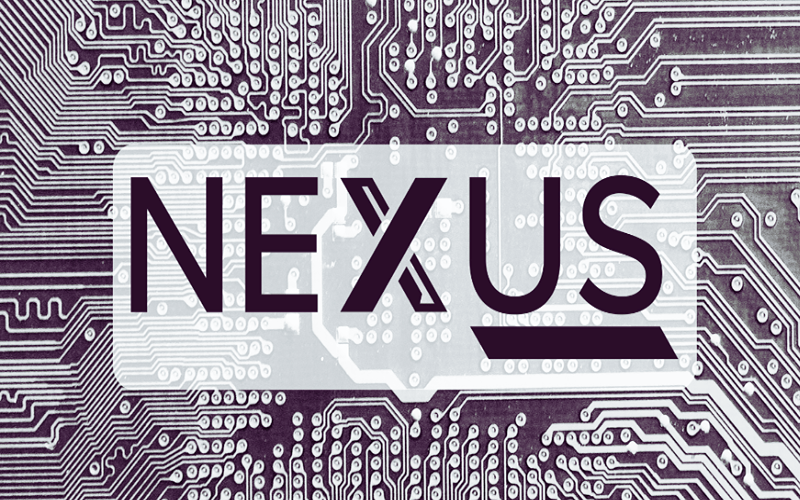Computers are considered one of the most powerful and intelligent devices, as they can help you with a lot of things, but can they simulate brain function or cure diseases? Unfortunately, it can’t, but perhaps in the future, a computer can be invented that can solve mysteries and help you prevent diseases. Georgia is stepping into the field of artificial intelligence with a $20 million grant from the National Science Foundation to create Nexus. Nexus Supercomputer is in the category of the most advanced supercomputers in the United States that can perform different activities.
Today, we shall be taking a look at how Georgia is advancing to create one of the most advanced supercomputers that the world has seen. Nexus Supercomputer is a high-tech brainiac that can change the entire artificial intelligence and technological game of the United States. It offers thrilling computing powers and swift abilities. So, are you ready for Nexus and to learn how this new MVP can enhance the state’s technological capabilities? Let’s dive deep to understand more about the Georgia $20M Nexus Supercomputer.

Nexus and The Future of Computing
One of the major news stories that is making headlines is related to the development of Nexus, which is an AI supercomputer funded by Georgia Tech with the help of the National Science Foundation. This $20 million grant will help the United States with one of the most advanced research tools. But a big question that arises is, what is the actual goal of Nexussand how can it help the U.S.? Well, Georgia Tech mentioned that the major goal of the Nexus Supercomputer would be to develop and progress science across different disciplines to make artificial intelligence more accessible and better.
This is one of the most advanced supercomputers and is built to help in research related to the field of medicine, energy, neuroscience, and manufacturing. This will help all the scientists to research on different topics and speed up the process of discovering new information and data, and process massive datasets at a very high speed. Georgia Tech is aiming to make this $20 million supercomputer easily accessible to researchers all over the U.S. and not just the big companies and elite classes.
What is Inside the Supercomputer Nexus?

Angel Cabrera mentioned that he is delighted to have the university’s help to develop research in the field of artificial intelligence and mentioned, “We should have been selected to host this new supercomputer.” This $20 million supercomputer is capable of executing about 400 quadrillion operations every second. In short and simpler form, this is equal to having every person on our planet perform 50 million calculations every second simultaneously.
Nexus Supercomputer will also be armed with about 330 trillion bytes of memory, and this gives it an upper hand to process even the most complex challenges that involve a lot of datasets and information. Another area where this supercomputer flexes is storage, as it gives about 10 quadrillion bytes of flash storage, which is equal to 10 billion reams of paper. The best thing about Nexus is data connections between users and machines for the smooth and seamless transfer of data, and hence, scientists no longer have to wait hour after hour for uploads and downloads.
Levelling the Research Field with Nexus
Nexus is a $20 million supercomputer and also an open-access model that will be available to all researchers in the United States. It marks a very important step towards developing research with the help of artificial intelligence and machines to expand opportunities in different institutions all over the United States. AI has become much more advanced than it was in the last decade with the help of new information and experiences.
Suresh Marru, who is the principal investigator of the project, pointed out that Nexus will help to level the playing field. He went on to explain how this system is mainly designed to make AI tools more efficient and accessible to all people, and especially to scientists and researchers. The commitment of both Georgia Tech and the National Science Foundation is really commendable, as they are both collaboratively working to make AI-driven scientific advancements.
The Road to Nexus
The real question that everyone has in mind is probably when the idea of creating a supercomputer for researchers sprang out? It was a product of many years of planning, preparation, and also the previous successful missions of Georgia Tech. It is built on a foundation that has been laid down by HIVE, which is a supercomputing project funded by the National Science Foundation. Nexus Supercomputer is planned to be housed at the CODA data centre, which is a state-of-the-art facility representing the commitment and robust nature of Georgia Tech.
- Read More: Google Bets on AI: A $25 Billion Brain Boost for Data Centers and Workforce Training
- Read More: 5 ChatGPT Prompts for Side Hustle 2025: Benefits & Uses
Collaboration for a Greater Global Impact
The collaboration between Georgia Tech and the NSF is a partnership that can not only benefit the researchers in the United States but also researchers all over the world. It is a national collaboration and a project that partners with the National Centre for Supercomputing Applications at the University of Illinois. Charles Isbell, who is the current chancellor of the university, has mentioned that the Nexus Supercomputer is more than just a supercomputer, and it is a symbol of leading technological advancements, too.
This was all we knew about the $20 million supercomputer that can perhaps solve and cure diseases and decode the brain. If you have any queries, make sure to drop them in the comments below and check out our website for more informative blogs and updates!


